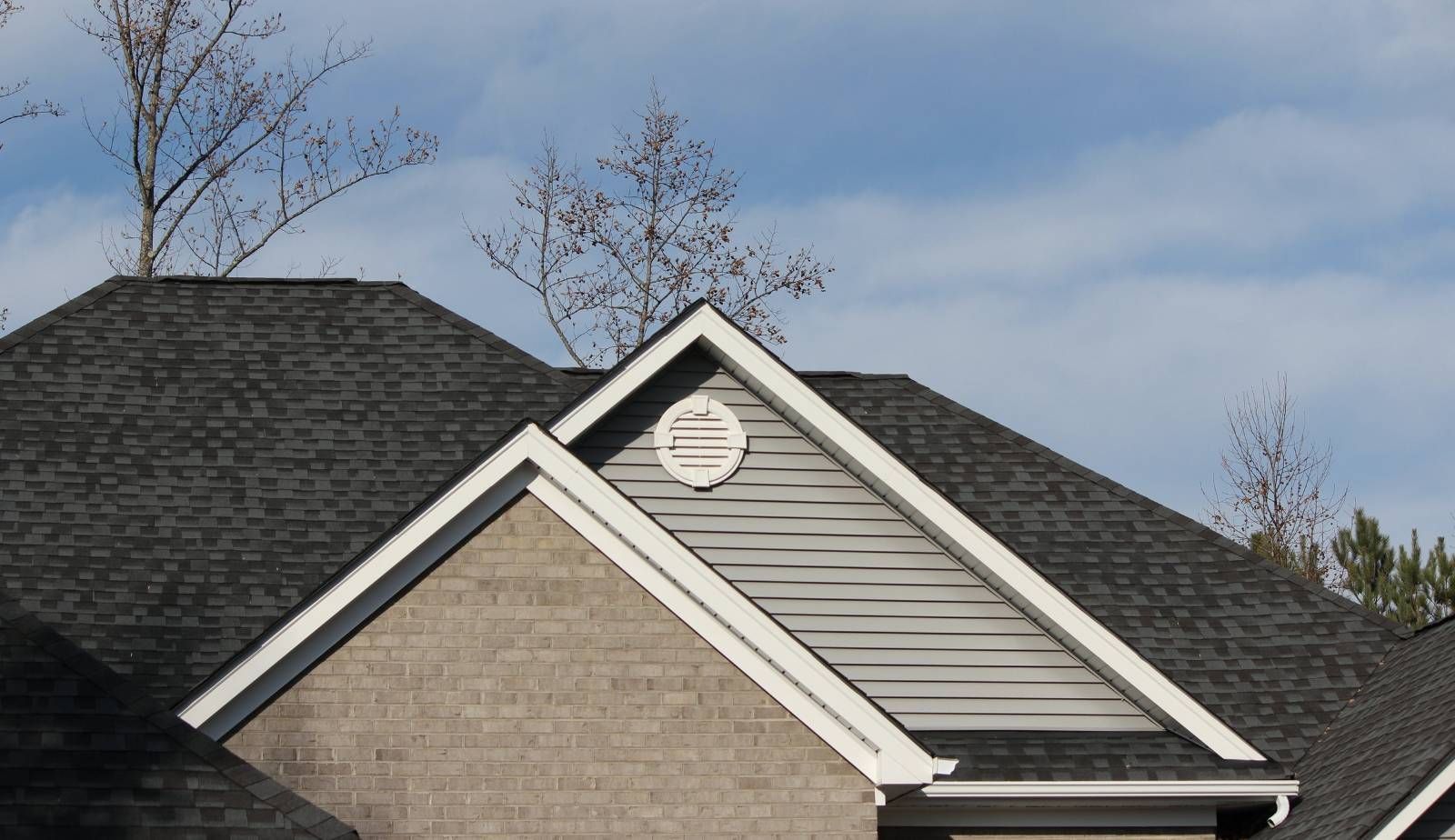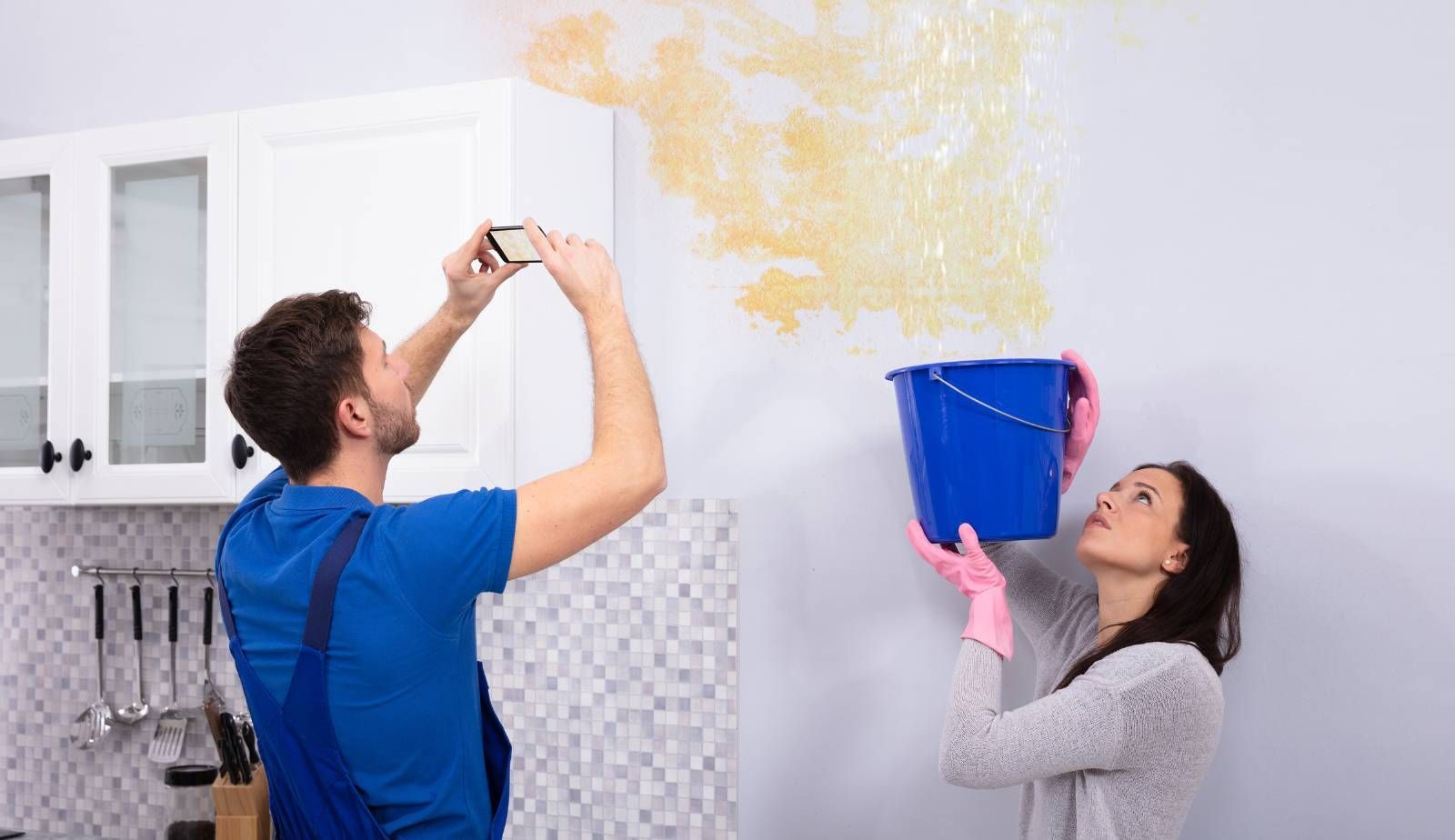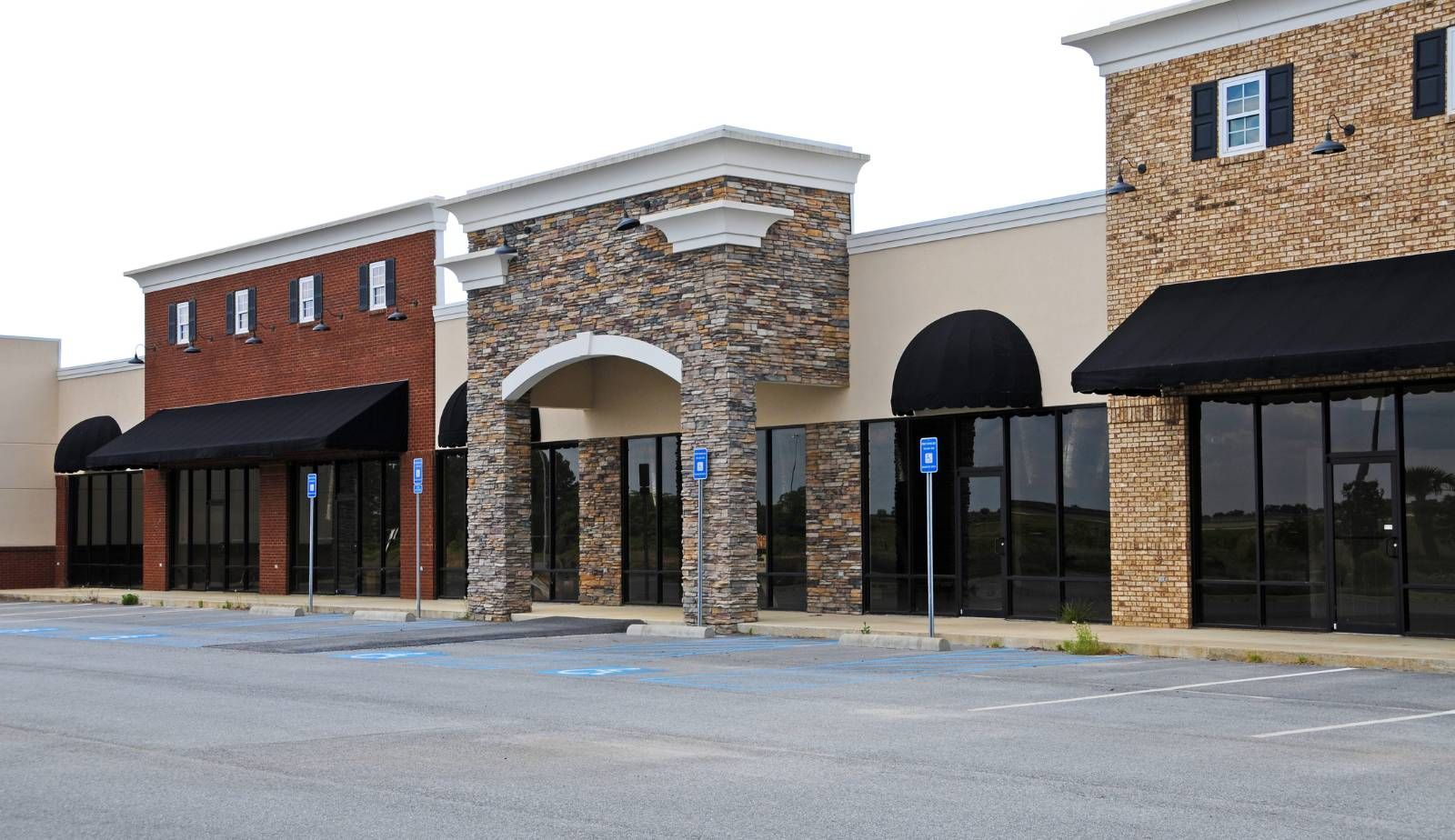Choosing the Right Restoration Service for Smoke and Soot Damage in Louisiana: Key Factors and Expert Solutions from DryMax
Choosing the right restoration service for smoke and soot damage in Louisiana is crucial for homeowners facing the aftermath of a fire.
When selecting a restoration service, homeowners should prioritize companies with proven certifications, extensive experience, and advanced techniques to effectively restore their homes to pre-damage condition. Understanding the nuances of smoke and soot damage is essential, as the residual effects can lead to further complications if not properly addressed.
DryMax stands out in the restoration industry due to its commitment to excellence and dedication to customer satisfaction. With an experienced team and cutting-edge equipment, DryMax utilizes a comprehensive approach that ensures all affected areas are restored, eliminating both visible and hidden damage. Their robust understanding of insurance processes also eases the burden on homeowners, allowing them to navigate claims efficiently while focusing on recovery.
Choosing a local service like DryMax also means benefitting from immediate response times and a strong community presence in Louisiana. Homeowners can have peace of mind knowing that the restoration team is not only skilled but also invested in the well-being of their community.
Key Takeaways
- Selecting a certified and experienced restoration service is vital for effective recovery.
- A comprehensive approach to smoke and soot damage ensures thorough restoration.
- Local restoration services provide prompt support and navigation of insurance claims.

Understanding Smoke and Soot Damage
Smoke and soot damage poses significant risks to both health and property. Understanding the types of smoke and soot as well as their long-term impacts is crucial to effective cleanup and restoration. This section explores essential aspects of smoke and soot damage.
Types of Smoke and Soot
Smoke varies based on the materials burned during a fire. The two primary types are wet smoke and dry smoke. Wet smoke results from burning low-temperature materials like plastic, creating sticky residues and pungent odors. Conversely, dry smoke arises from high-temperature fires, producing fine particles that can penetrate deep into surfaces.
Soot damage can come from various sources, including chimney fires and household incidents. Identifying the type of damage helps determine the appropriate cleaning methods and materials for restoration. Specific techniques, tailored to each type, are essential for effective sanitization.
Health and Safety Concerns
Smoke and soot inhalation can lead to serious health issues. Short-term exposure may cause coughing, headaches, and eye irritation. Long-term exposure increases the risk of respiratory diseases and can even contribute to conditions like lung cancer.
When faced with smoke damage, immediate cleanup is critical to diminishing health risks. Professionals use advanced techniques to remove soot and sanitize affected areas, thus preventing further complications. This includes specialized equipment to ensure thorough cleaning and particle removal, ensuring a safer environment for occupants.
Long-term Impacts on Property
Smoke and soot can cause extensive and long-lasting damage to properties. They can stain walls and furniture, and their corrosive properties can deteriorate various materials. Smoke penetrates deeply into fabrics and structures, resulting in hidden damage and unpleasant odors.
Failure to address soot damage promptly leads to secondary damage, including etching on glass and metals. Restoration professionals assess the extent of the damage and employ specialized cleaning techniques to restore homes to their pre-damage condition. Preventing secondary damage is key to maintaining the property’s integrity and longevity. Understanding the nuances of smoke and soot damage aids homeowners in selecting effective restoration services.
Evaluating Restoration Companies
When assessing restoration companies for smoke and soot damage, homeowners should prioritize certifications, local experience, and the advanced techniques employed by the service. These factors can significantly impact the effectiveness and efficiency of the restoration process.
Certifications and Expertise
Certifications indicate a company's commitment to excellence in the restoration industry. Homeowners should look for credentials from recognized organizations such as the Institute of Inspection, Cleaning and Restoration Certification (IICRC) or other relevant bodies. These certifications ensure that the company’s technicians are highly trained and possess the expertise needed to handle complex restoration projects.
A certified company follows established standards and guidelines, improving the likelihood of restoring a home to its pre-damage condition. Technicians with specialized training can address specific challenges related to smoke and soot damage more effectively than those without formal credentials.
Experience in Louisiana
Experience is a crucial factor when evaluating restoration services. A company with a strong track record in Louisiana is more likely to understand the unique challenges posed by local climates and building structures. Knowledge of local regulations, environmental factors, and common fire issues ensures that the restoration process runs smoothly.
Moreover, established companies often have extensive case histories demonstrating their success in similar situations. This experience allows them to anticipate potential problems and employ tailored solutions quickly, helping to minimize disruption to the homeowner's life.
Advanced Restoration Techniques
Advanced techniques for smoke and soot damage restoration can greatly influence the outcome of a project. Companies that invest in cutting-edge equipment and methodologies can enhance their restoration process. Techniques such as thermal fogging, hydroxyl generation, and specialized detergents are among those that can effectively eliminate odors and stains caused by smoke and soot.
Additionally, these advanced methods reduce the overall time and cost of restoration while achieving better results. Homeowners should inquire about the specific techniques a company uses to ensure they are employing industry best practices for comprehensive restoration.
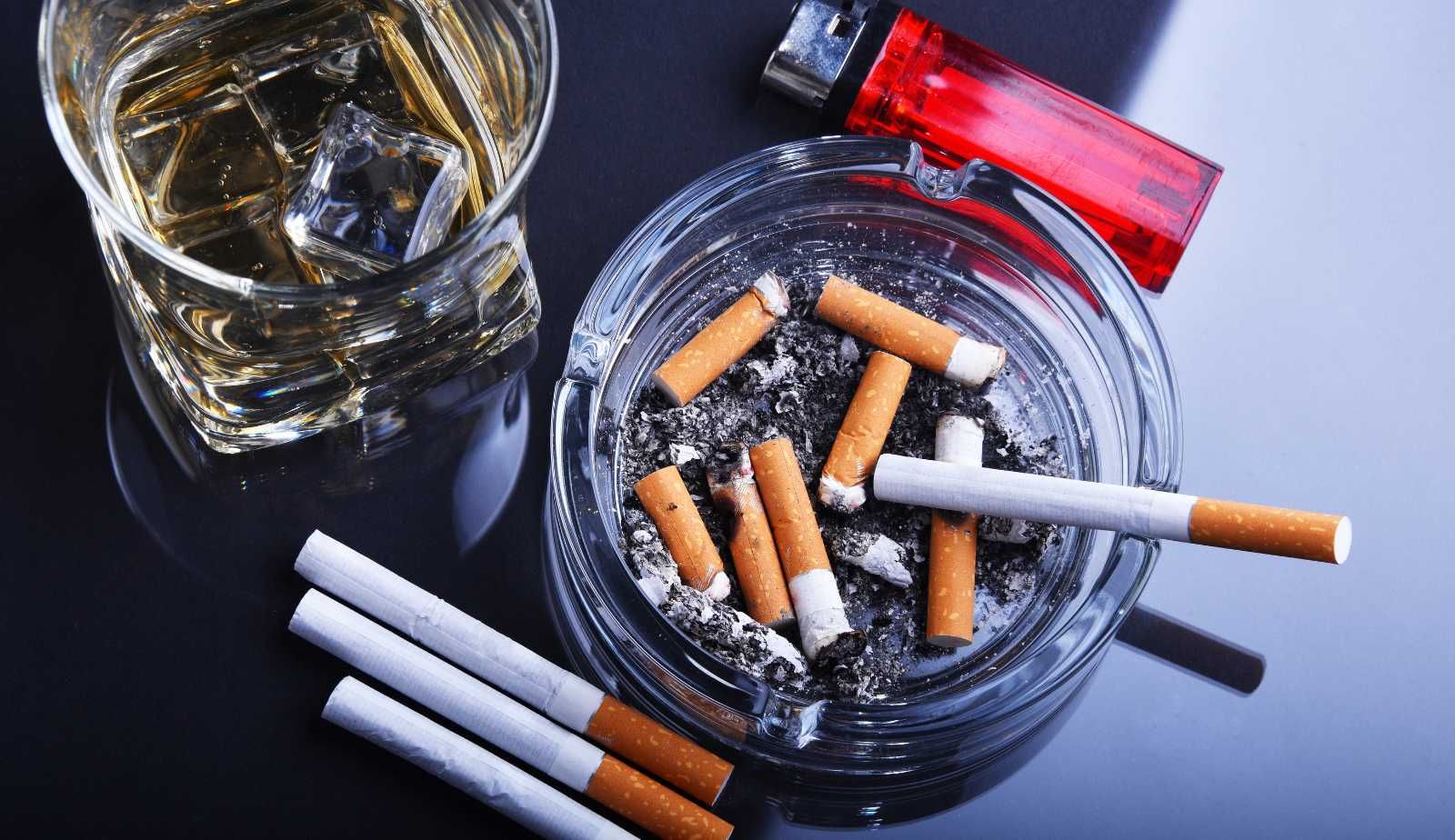
DryMax’s Comprehensive Approach
DryMax utilizes a thorough methodology to address smoke and soot damage, focusing on customer satisfaction, expert equipment, and proven restoration techniques. This approach ensures that homeowners receive effective and reliable service throughout the restoration process.
Commitment to Customer Satisfaction
DryMax prioritizes customer satisfaction in every project. They understand the stress that comes with smoke damage, so clear communication is essential. From the initial assessment to the final walk-through, technicians keep homeowners informed about each step of the process.
The team listens to client concerns and tailors services to meet specific needs. This proactive engagement helps instill confidence and fosters trust. DryMax also values feedback and continually seeks ways to improve services based on customer input.
Use of Specialized Equipment
Utilizing advanced equipment is crucial in smoke and soot damage restoration. DryMax employs specialized tools like dehumidifiers, air scrubbers, and air movers.
- Dehumidifiers reduce moisture, preventing mold growth.
- Air scrubbers filter out pollutants, ensuring clean air during the restoration process.
- Air movers expedite drying by increasing airflow.
This combination of equipment allows the team to effectively mitigate further damage while restoring the property. Their investment in top-of-the-line technology demonstrates commitment to quality and efficiency.
Proven Restoration Methodology
DryMax follows a thorough and systematic restoration methodology. Their process begins with a comprehensive assessment to understand the extent of the damage. Technicians then develop a customized plan addressing specific needs.
Each job adheres to industry standards and employs proven techniques to restore homes effectively. DryMax’s certified professionals have the training to handle various scenarios, ensuring optimal results and returning properties to their pre-damage condition.
With this structured approach, DryMax has earned a reputation for excellence in the restoration industry.
Water Damage and Secondary Effects
Water damage can lead to significant problems beyond the initial flooding. It is crucial to address water-related issues quickly to prevent long-term harm to the property. The following points highlight the importance of immediately managing water damage and mitigating its secondary effects.
Dealing with Water Damage
When water intrusion occurs, the first step is to remove water swiftly and effectively. Professional restoration services utilize specialized equipment such as water extraction pumps and industrial dehumidifiers. This equipment is essential for reducing moisture levels in the home.
After removing standing water, technicians assess the areas affected. They look for hidden moisture in walls, floors, and furniture. A thorough inspection ensures that no residual water remains, which could lead to mold growth and structural issues if overlooked.
Mold Prevention and Treatment
Mold can develop within 24 to 48 hours after water damage occurs. To prevent secondary damage, immediate action is vital. Professional services often implement antimicrobial treatments to inhibit mold growth on surfaces.
If mold is already present, it requires safe and effective removal. Technicians utilize containment systems to isolate the affected areas, preventing spores from spreading. Following removal, they apply preventative solutions to minimize future mold risks. Proper air circulation and humidity control are essential in this process.
Structural Repairs and Water Removal
Structural repairs become necessary when water damage compromises the integrity of the home. Professionals evaluate the extent of damage to key areas such as beams, foundations, and drywall. Depending on the severity, repairs may involve replacing materials or reinforcing existing structures.
After the water removal process, it is crucial to restore surfaces to their previous condition. Restoration experts will handle flooring, cabinetry, and other structural components damaged by water or mold. High-quality repairs ensure the home returns to a safe and livable state, mitigating the risk of future damage and maintaining property value.
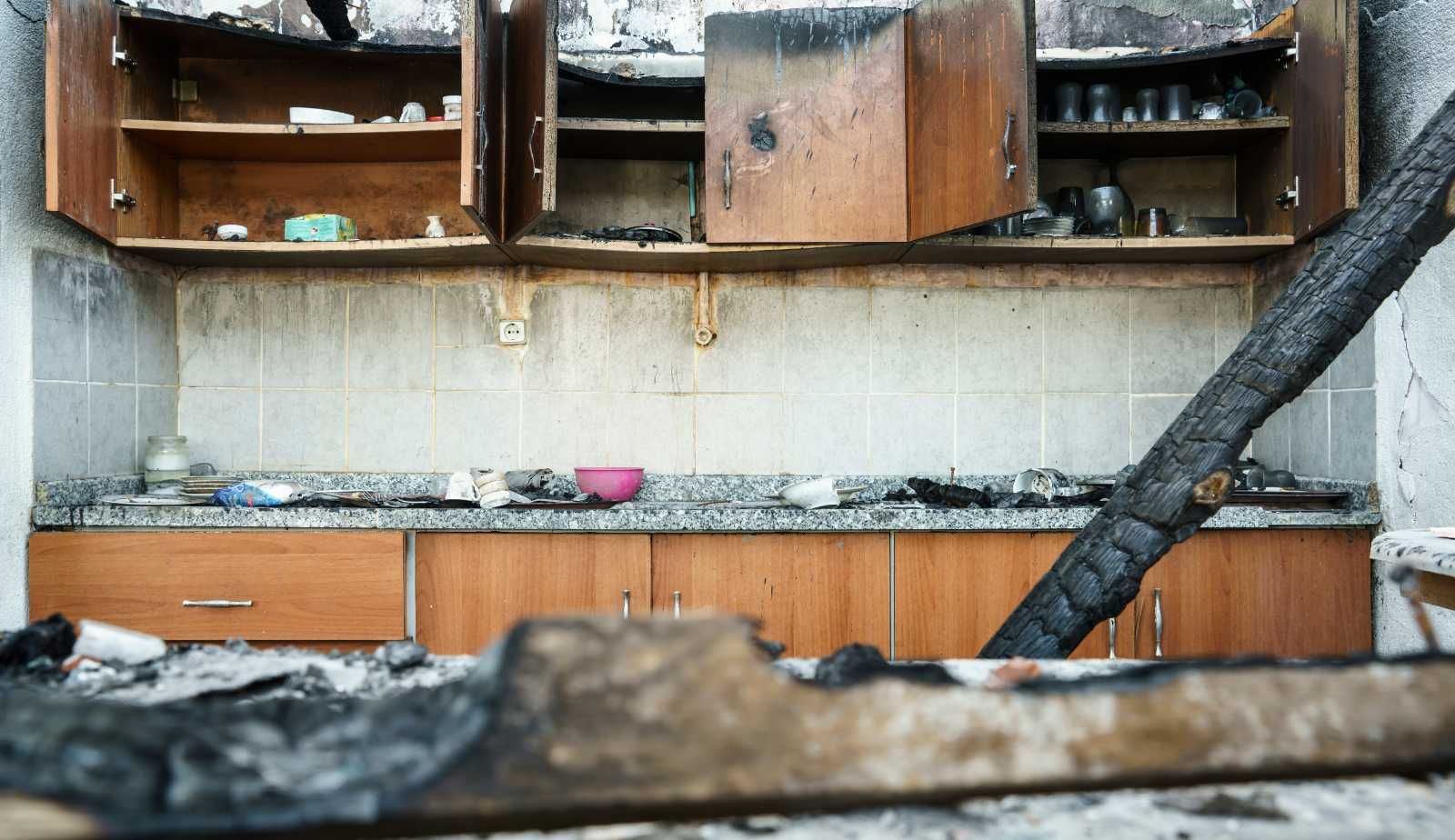
Responding to Emergencies
When smoke and soot damage occurs, immediate action is critical. Quick response from a restoration service can significantly reduce damage and restore safety to the home. Homeowners should consider a service’s availability, protocols, and response capabilities.
24-Hour Emergency Services
A reliable restoration service offers 24-hour emergency services to address unexpected incidents. Smoke and soot can spread quickly, so having professionals ready to respond at any hour is essential.
Homeowners should confirm that the restoration company they choose operates round-the-clock, ensuring they can mobilize help as soon as an incident happens. This availability minimizes the potential for lingering odors and ongoing damage, which can worsen over time. Efficient emergency services can help swiftly mitigate health risks associated with smoke exposure.
Emergency Protocols and Readiness
An effective restoration team must have established emergency protocols in place. These protocols guide the response strategy during an emergency, ensuring that all steps are executed properly.
Homeowners should inquire about the company’s readiness to handle various disaster situations. This includes having the necessary equipment and trained personnel available to address smoke and soot damage specifically. Proper protocols entail immediate assessment, ventilation measures, and appropriate material disposal to prevent secondary damage.
Rapid Response Teams
In emergencies, the presence of rapid response teams can make a difference. These teams specialize in quick action and are trained to handle smoke and soot situations efficiently.
Restoration services with rapid response teams can often arrive within hours of a reported incident. Their training includes assessing the damage and removing damaged items promptly. Timely intervention not only safeguards the property but also provides peace of mind to homeowners facing stressful situations.
Working with Insurance
Navigating insurance matters can be complex for homeowners dealing with smoke and soot damage. Understanding the claims process, exploring direct billing options, and effectively liaising with insurance companies are critical components for alleviating some of the stress caused by fire-related incidents.
Navigating Insurance Claims
When filing an insurance claim for smoke damage, homeowners must provide detailed documentation of the damage. This includes photographs, a list of affected items, and estimates from restoration professionals. It is vital to contact the insurance company promptly to initiate the claims process.
Homeowners should thoroughly review their policies to understand coverage limits and exclusions. Recognizing these details can help avoid unexpected costs during the restoration process. Communicating openly with the insurance adjuster can facilitate smoother claim resolutions.
Direct Billing Options
Some restoration companies, such as DryMax, offer direct billing options to insurance companies. This means that homeowners may not need to pay upfront and wait for reimbursement. Instead, the restoration service can bill the insurance company directly for covered expenses.
This option can simplify the financial aspect of restoration, allowing homeowners to focus on the recovery process. Before proceeding, it is important for homeowners to confirm that their insurance provider allows direct billing arrangements with the chosen restoration service.
Liaise with Insurance Companies
Effective communication with insurance companies is essential for successful claims processing. Homeowners should maintain regular contact with their claims adjuster and promptly provide any requested information. Keeping a record of all communications can be beneficial for reference.
Utilizing a professional restoration service that understands the insurance landscape can provide homeowners with valuable assistance. They can help navigate the paperwork and terms set by the insurance company, ensuring that all necessary steps are completed for a timely resolution.
Local Presence in Louisiana
A restoration service with a local presence in Louisiana can greatly influence the effectiveness and efficiency of smoke and soot damage restoration. Proximity allows for quicker response times, familiarity with local regulations, and stronger community ties, which can enhance customer trust and satisfaction.
Coverage Across Key Cities
When selecting a restoration service, it is crucial to confirm their coverage across major cities in Louisiana, such as New Orleans, Baton Rouge, and Shreveport. They should operate in diverse areas including Alexandria, Lafayette, and Monroe.
A comprehensive service will ensure that homeowners in regions like Kenner, Metairie, and Bossier City receive prompt assistance. Services should extend to smaller communities as well, like Slidell and Prairieville, demonstrating broad accessibility and commitment to the region. A responsive team can speed up restoration efforts, minimizing further damage to properties.
Understanding Local Requirements
Each locale in Louisiana has specific regulations concerning restoration services. A knowledgeable provider will be familiar with these requirements, which can include environmental and safety standards that ensure compliance during restoration work.
For instance, cities like Lake Charles and Hammond may have unique policies regarding waste disposal and air quality control. Understanding these local factors enables a restoration service to navigate processes smoothly, minimizing delays and legal issues.
Those familiar with local laws can better protect homeowners from potential liabilities and ensure that all restoration activities meet state regulations, particularly in heavily populated regions like New Orleans and Baton Rouge.
Community Engagement
A restoration service’s involvement in local communities can enhance their reputation and responsiveness. Companies that participate in community events or support local organizations show their commitment beyond business interests.
In cities such as Sulphur, Harvey, and Laplace, community engagement fosters trust among residents. Providing educational resources on fire safety and disaster preparedness can position the service as a knowledgeable leader in the field.
Engagement helps cultivate strong customer relationships, which is invaluable during times of crisis. Homeowners in areas like Terrytown and Central may prefer to choose a service that understands their unique needs and actively invests in their community.
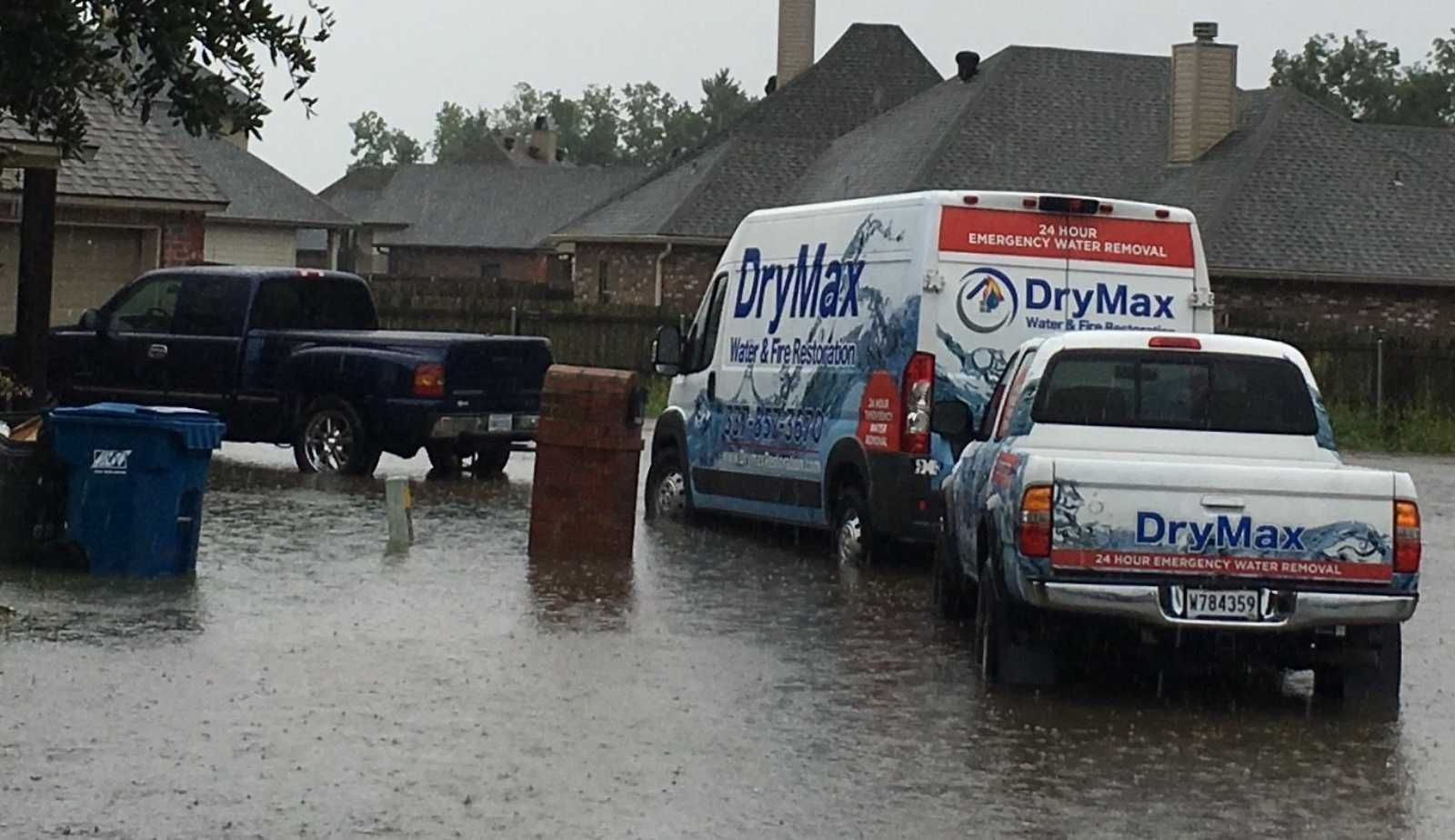
Scheduling Your Restoration
Timely scheduling is vital for effective restoration after smoke and soot damage. A prompt response not only minimizes further damage but also eases stress for homeowners. Knowing how to set an appointment and what to expect during the visit can enhance the restoration experience.
Setting an Appointment
Homeowners should prioritize contacting a restoration service as soon as smoke damage is detected. Most reputable companies, including DryMax, offer emergency services that can dispatch professionals quickly. When setting an appointment, it’s essential to provide details about the extent of the damage.
Homeowners can request a specific time slot that suits their schedule. It is advisable to ask about availability, response times, and whether the team can assess the situation promptly. This initial conversation can help determine how soon restoration efforts can begin, which is crucial for minimizing further damage.
What to Expect During the Visit
During the visit, a restoration team conducts a thorough assessment of the damage. They will examine areas affected by smoke and soot, checking for signs of structural harm or the need for specialized cleaning.
The team usually explains their process, techniques, and estimated timeline for restoration. Homeowners should expect detailed discussions about the necessary steps and anticipated outcomes.
Additionally, this visit is a good time to ask any questions regarding warranties, insurance claims, or follow-up services. Clear communication during the visit ensures that homeowners understand the entire restoration process.
After Service Follow-up
After the initial restoration service, a follow-up is often scheduled to assess the effectiveness of the work done. During this follow-up, the restoration team can verify that all areas have been correctly addressed and that no lingering odors or stains remain.
Homeowners should be proactive in monitoring their property for any signs of recurring issues. If problems arise, it is essential to report them promptly to the restoration service.
By maintaining communication with the restoration team, homeowners can ensure that any additional work required is performed efficiently, keeping their homes safe and clean from smoke and soot damage.
Conclusion
Choosing the right restoration service for smoke and soot damage is essential for effective recovery. Homeowners must prioritize companies that demonstrate certifications and experience in fire damage restoration.
DryMax stands out due to its advanced techniques, which ensure comprehensive cleaning and restoration. Their professionals utilize state-of-the-art equipment to eliminate soot and odor, contributing to customer satisfaction.
Homeowners should seek references and read reviews to gauge past performance. A reputable service should also provide a clear plan for restoring homes to their pre-damage condition.
Communication is key; a reliable service will keep clients informed throughout the restoration process. Transparency fosters trust and reassures homeowners about the care their property will receive.
In Louisiana, where moisture can compound smoke damage issues, selecting an experienced restoration service becomes even more critical. DryMax’s expertise can help mitigate these complications.
Ultimately, the right choice will facilitate a smoother recovery, ensuring homes are restored effectively and efficiently. The goal is to return properties to a safe and pleasant living environment, free from the lasting effects of smoke and soot.
Frequently Asked Questions
This section addresses common inquiries that homeowners may have when considering restoration services for smoke and soot damage. It covers qualifications, techniques, safety measures, and how to assess damage effectively.
What are the qualifications to look for when selecting a restoration service for smoke and soot damage?
Homeowners should seek restoration services with certified professionals who have expertise in fire damage restoration. Certifications such as IICRC (Institute of Inspection, Cleaning and Restoration Certification) signify training and adherence to industry standards. Experience in handling smoke and soot damage specifically is also crucial for effective restoration.
How does DryMax Restoration ensure quality in smoke and soot damage remediation?
DryMax Restoration adheres to strict quality control processes throughout the restoration. They utilize trained specialists who follow industry best practices and standards. Regular assessments during the restoration process help ensure that work meets both client expectations and regulatory requirements.
What techniques are employed by DryMax to restore homes affected by smoke and soot?
DryMax uses advanced techniques including specialized cleaning agents and equipment designed specifically for smoke residues. Their methods may involve dry cleaning, wet cleaning, and specialized deodorization practices to eliminate odors. This comprehensive approach restores homes to their pre-damage condition effectively.
Which certifications are important for a restoration service tackling smoke and soot damage in Louisiana?
The essential certifications include IICRC, which ensures the service provider is well-trained in restoration practices. Additionally, certifications related to environmental safety and local building codes are important to guarantee compliance with regional standards and safety regulations.
How can homeowners assess the extent of smoke damage before engaging a restoration service?
Homeowners can begin by visually inspecting affected areas for soot, discoloration, or lingering odors. They should assess whether the damage has penetrated walls or ceilings. Taking notes and photographs can assist in conveying the issues to restoration professionals.
What safety measures should be taken into consideration when staying in a home after smoke damage?
Safety measures include ensuring proper ventilation to reduce smoke odors. Homeowners should avoid using fans that could spread soot further. It's also advisable to wear protective gear when cleaning up visible damage to safeguard against inhaling harmful particles.
You might also like
DryMax Restoration Blogs
